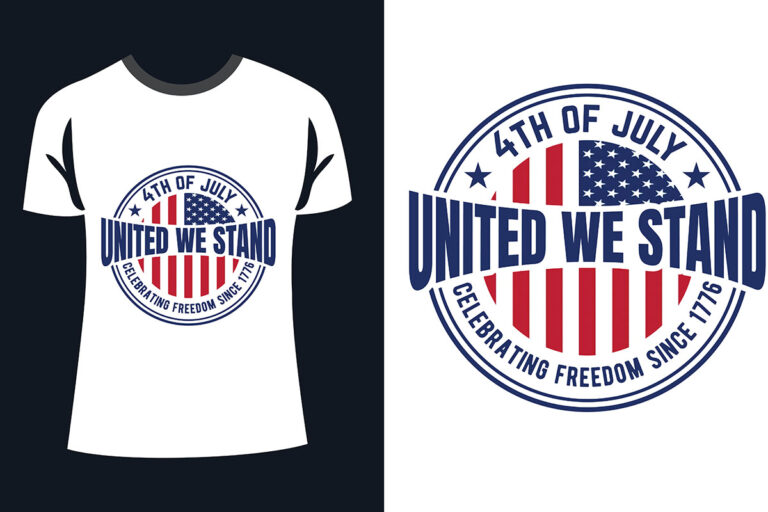In the ever-evolving landscape of printing, **UV DTF Technology** stands out as a groundbreaking innovation that is reshaping the industry. This advanced printing technique not only delivers stunning, high-quality prints but also offers significant advantages over traditional methods, including durability and eco-friendliness. By harnessing ultraviolet light for curing, UV DTF technology ensures vibrant colors and detailed imagery that captivate consumers’ attention. As businesses look towards the future of printing, exploring the benefits of UV DTF printing presents an exciting opportunity to stay ahead in a competitive market. Join us as we delve into the transformative capabilities of this revolutionary printing process.
Known as ultraviolet direct to film printing, UV DTF technology is leading the way in modern printing solutions. This innovative method combines high-performance inks with fast curing techniques to create prints that are not only eye-catching but also highly durable. In an era where sustainability is crucial, many are turning to eco-friendly printing alternatives that reduce environmental impact while still producing exceptional quality. As the demand for customized and resilient printed products grows, this contemporary approach is catching the attention of businesses aiming to elevate their offerings and meet evolving consumer expectations. Discover how this technology promises to alter the future landscape of printing with its myriad advantages.
Understanding UV DTF Technology
UV Direct to Film (DTF) technology is revolutionizing the printing landscape by incorporating advanced UV curing processes. Unlike traditional methods that often rely on heat, UV DTF utilizes ultraviolet light, leading to an instant curing effect that enhances print quality and durability. This technology not only supports vibrant and intricate designs but also ensures that printed materials are resilient to various environmental factors. As businesses look to innovate, understanding the mechanics of UV DTF brings clarity to its advantages.
Moreover, UV DTF is not just about quality; it promotes an eco-friendly printing approach that resonates with modern sustainability goals. The inks used in UV DTF printing typically produce lower levels of volatile organic compounds (VOCs), making them less harmful to both the environment and the workforce. As global awareness of environmental issues rises, including a shift toward greener production methods, UV DTF aligns perfectly with these values, paving the way for the future of printing.
Key Advantages of UV DTF Printing
The advantages of UV DTF printing are manifold, starting with its unparalleled durability. The unique UV curing process solidifies inks almost instantly, resulting in prints that are scratch-resistant and weatherproof. This characteristic is particularly essential for businesses in need of outdoor signage and promotional materials that can withstand the elements. Companies can rely on UV DTF for products that maintain their integrity, ensuring longevity and reliability in various applications.
Additionally, UV DTF technology delivers high-quality prints marked by vibrant colors and crisp details. The capability of these printers to achieve a broader color gamut surpasses that of conventional printing methods. This ensures that designs not only look stunning but also accurately represent branding and artistic intentions. Whether for marketing materials or custom merchandise, the high-quality prints produced through UV DTF technology play a pivotal role in capturing attention and elevating brand perception.
The Future of Eco-Friendly Printing
As the printing industry moves towards sustainability, UV DTF technology stands out for its eco-friendly options. Many of the inks used in UV DTF produce significantly less VOC emissions, contributing to healthier working environments and reducing the overall environmental footprint of printing operations. This shift towards eco-conscious solutions is not just a trend; it signals a fundamental change in how businesses approach production and customer relations.
Incorporating eco-friendly practices can enhance a company’s brand image, attracting environmentally-conscious consumers. The ability to offer sustainable printing options positions businesses as leaders in their fields, catering to a growing market that values responsible production methods. As we envision the future of printing, the importance of eco-friendly printing technologies cannot be overstated, and UV DTF plays a crucial role in this evolution.
Versatility Across Multiple Materials
One of the most compelling advantages of UV DTF technology is its remarkable versatility. This innovative printing method can be adapted to a wide range of substrates, including materials like plastic, metal, wood, glass, and textiles. This ability allows businesses to offer an expansive array of products, from custom promotional items to intricate art reproductions. As market demands evolve, the capacity to print on diverse materials gives companies a competitive edge.
Furthermore, the versatility of UV DTF empowers designers and marketers to unleash their creativity. Instead of being constrained to traditional media, businesses can craft unique solutions that resonate with specific client needs or market trends. This adaptability not only enhances product offerings but also fosters innovation, encouraging businesses to explore new opportunities and meet customer expectations effectively.
Cost-Effective Production Benefits
Despite the higher initial investment in UV DTF printing technology compared to traditional methods, the long-term cost benefits are significant. Businesses experience reduced material waste and lower energy consumption, leading to overall savings over time. The efficiency of the UV curing process not only speeds up production but also decreases the costs associated with drying and handling, resulting in a more streamlined workflow.
Cost-effectiveness is crucial for businesses aiming to maximize profits while maintaining quality. By adopting UV DTF technology, companies can produce high-quality materials without compromising their bottom line. As more businesses discover these advantages, the shift towards UV DTF printing is likely to expand, reinforcing its position as a viable solution in the competitive landscape of modern printing.
Accelerated Production Times in Modern Printing
In today’s fast-paced market, shorter production times are essential for maintaining competitiveness. Traditional printing methods often involve extended drying cycles, which can lead to delays and customer dissatisfaction. In contrast, UV DTF technology allows for instant curing of inks, enabling finished prints to be ready for handling right away. This efficiency translates to quicker turnaround times, catering to the increasing demands for rapid delivery in businesses across sectors.
The ability to provide swift production not only meets client needs but also enhances customer satisfaction. By ensuring that projects are completed expediently without sacrificing quality, businesses can secure repeat clientele and foster positive relationships. As the printing industry embraces technologies like UV DTF, the focus on optimized production cycles will continue to shape its future, allowing for more responsive and agile operations.
Frequently Asked Questions
What are the main advantages of UV DTF technology in printing?
UV DTF technology boasts several advantages including high durability, vibrant colors, and eco-friendly printing options. The UV curing process enhances print resilience against scratching and fading while producing vivid, sharp images. Additionally, it utilizes inks that emit lower levels of VOCs, aligning with the growing demand for sustainable printing solutions.
How does UV DTF technology improve the quality of prints compared to traditional methods?
UV DTF technology enhances the quality of prints by utilizing instant curing with UV light, allowing for a broader color gamut and finer details. This results in sharper, high-quality prints with vibrant colors that are more visually appealing and professional than those produced by traditional printing methods.
Is UV DTF printing considered an eco-friendly option?
Yes, UV DTF printing is considered eco-friendly. Many UV-curable inks release fewer volatile organic compounds (VOCs) compared to conventional solvent-based inks, promoting healthier work environments and reducing environmental impact. This makes it an excellent choice for businesses and consumers who prioritize green printing solutions.
What types of materials can UV DTF technology print on?
UV DTF technology is highly versatile and can print on a variety of materials, including plastic, metal, wood, glass, and textiles. This adaptability allows businesses to meet diverse client needs and expand their service offerings beyond conventional printing substrates.
How does UV DTF technology affect production times in the printing industry?
UV DTF technology greatly reduces production times due to its instant curing process. Unlike traditional printing methods that require long drying times, UV prints can be handled immediately after printing, leading to faster turnaround times for customers and increased overall efficiency in production.
What is the future of printing in relation to UV DTF technology?
The future of printing is leaning towards innovative technologies like UV DTF. With its high-quality output, durability, and eco-friendly attributes, UV DTF technology is set to become a standard in the industry, providing businesses with efficient, reliable, and sustainable printing solutions that meet modern demands.
| Feature | Description |
|---|---|
| High Durability | UV DTF printing offers enhanced durability, making it resistant to scratching, fading, and weather. |
| Vibrant Colors and High Quality | Provides a broader color gamut and sharper images, ensuring high aesthetic appeal. |
| Eco-Friendly Options | Utilizes eco-friendly inks with lower VOC emissions, promoting a healthier working environment. |
| Versatility Across Materials | Can print on various substrates like plastic, metal, wood, glass, and textiles. |
| Cost-Effective Production | Long-term savings due to reduced waste and lower energy costs despite higher initial equipment investment. |
| Shorter Production Times | Instant curing allows for immediate handling of prints, speeding up production schedules. |
Summary
UV DTF Technology is revolutionizing the printing landscape by offering robust advantages that cater to both commercial and artistic needs. This cutting-edge method combines direct-to-film printing with UV curing, resulting in prints that boast high durability and vibrant colors. Beyond aesthetic appeal, UV DTF technology is eco-friendly, often utilizing inks with lower VOC emissions, thereby aligning with sustainable practices. Its impressive versatility allows for use across a range of materials, making it an attractive option for various applications from merchandise to signage. Moreover, the long-term cost-effectiveness and reduced production times position UV DTF printing as an essential solution for businesses aiming to thrive in a competitive marketplace. As the printing industry evolves, embracing UV DTF technology is not just a trend but a strategic move toward innovation and efficiency.







